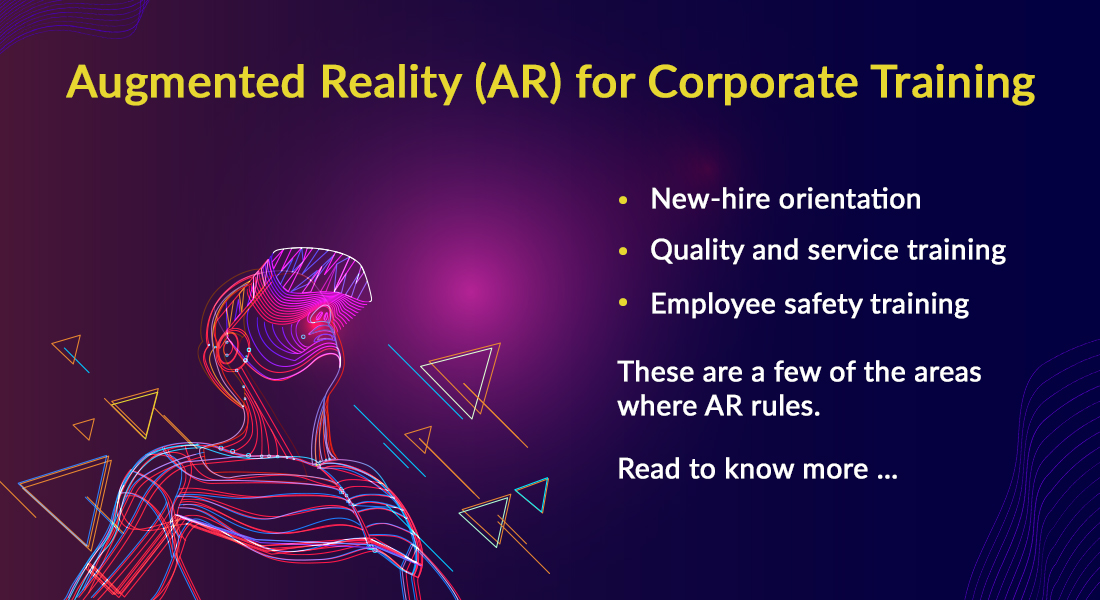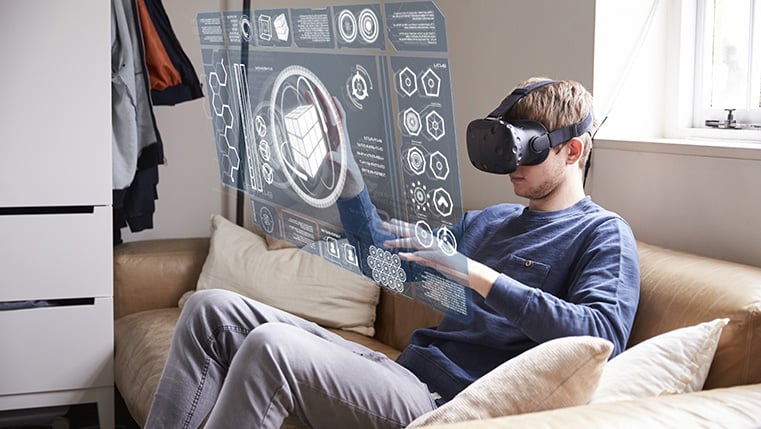Leveraging AR/VR Technology in eLearning [5 Best Ways + Advantages + Disadvantages]
![Leveraging AR/VR Technology in eLearning [5 Best Ways + Advantages + Disadvantages] Leveraging AR/VR Technology in eLearning [5 Best Ways + Advantages + Disadvantages]](https://blog.commlabindia.com/hubfs/Imported_Blog_Media/Leveraging-ARVR-Technology-in-eLearning-5-Best-Ways-Advantages-Disadvantages.jpg)
In recent years, with the advent of digital technologies, it is no surprise that the world of corporate training has undergone a massive transformation. Digital technology provides advanced, more immersive techniques and ways to learn new things. And as we see a significant shift toward more immersive and interactive learning experiences, the increased use of Augmented Reality (AR) and Virtual Reality (VR) in corporate training is no surprise. AR and VR technology is an incredibly powerful tool for organizations as well as individual instructors who wish to deliver engaging and effective eLearning content.
Planning to Leverage AR and VR Technology in eLearning?
Here are the 5 best ways you can use them for:
- Enhance visual learning
- Develop practical skills
- Foster collaborative learning
- Overcome learning challenges
- Increase engagement
In this blog, we will explore the top five ways you can leverage Augmented Reality (AR) and Virtual Reality (VR) technologies in eLearning and make the most out of it. Along with that, we’ll also take a look at a few advantages and disadvantages of using AR/VR in eLearning.
Are you ready? Let’s begin!
5 Best Ways You Can Leverage AR/VR Technologies For in eLearning
1. Enhance Visual Learning
When providing training to your employees, incorporating AR and VR technology can greatly enhance their learning experience by facilitating the visual engagement. It enables your learners to interact with training objects in a virtual environment. You can use 3D models, animations, and simulations to augment the learning experience. This makes it easier for the learners to visualize complex concepts, understand them, and implement them effectively.
For instance, you can use simulations for training employees in customer service as they can practice handling difficult customer interactions. Apart from that, you can also leverage AR for leadership training to help your learners visualize, understand, and apply leadership skills and principles in a simulated workplace. AR and VR technology can be a great addition to your training programs as it can help your employees retain information better and apply it effectively in their roles, thereby boosting productivity and performance.
→ Get Your Copy Now: Instructional Design Guide
2. Develop Practical Skills
As a trainer, you can leverage AR and VR technology to help your learners develop practical skills in a safe and controlled environment. It enables you to simulate real-world scenarios, thereby giving your employees the opportunity to practice and learn hands-on as well as from mistakes without the fear of real-life consequences. For example, you can provide training to medical professionals by enabling them to practice various surgical procedures using AR and VR technology. Similarly, you can leverage AR and VR to provide other kinds of training, such as safety training, developing soft skills training, etc.
Clearly, using AR and VR technology in corporate training is particularly helpful in training professionals who need to practice specific skills before applying them in the real world. It helps them gain confidence and mastery without putting themselves or others at risk. So incorporate AR and VR technologies into your training programs and enable your employees to acquire practical skills more effectively and efficiently.
3. Foster Collaborative Learning
Did you know that AR and VR technology can be a game changer in the way your employees collaborate? It enables your learners to collaborate in a virtual space and enhance their learning experience. In fact, AR and VR technology helps them overcome the barriers of physical location and fosters seamless collaborative learning. A popular example of collaborative learning and digital interaction is Metaverse.

With AR and VR technology, your employees can easily work together on projects, brainstorm ideas, and receive feedback in real-time, thereby streamlining their teamwork and communication skills. These elements are integral to ensure a productive and successful workplace, particularly for today’s globally dispersed workforce. So why not take advantage of AR and VR technologies and create a more engaging, interactive, and collaborative learning experience for your employees?
4. Overcome Learning Challenges
Ever wished there was a way to overcome learning barriers and provide effective corporate training to ALL your employees? Well, AR and VR technology offers you just that! With these cutting-edge immersive technologies, you can make learning more accessible for employees who may have difficulty working with traditional learning materials.

For example, you can use AR/VR for learners with disabilities to help them experience and learn various training concepts, making it easier for them to understand. Similarly, learners who struggle with reading can use VR to listen to audio-based training material and even participate in interactive simulations.
5. Increase Learner Engagement
No more yawns and doze-offs during the training sessions. You read it right! AR and VR technology has the magic that can help you significantly increase learner engagement. And how does it do that? Well, it does so by facilitating immersive and interactive learning experiences.
Instead of passively consuming information, your learners get to actively engage with the training content, thereby making the learning process more memorable and enjoyable. All these factors assist you in motivating learners, boosting participation, increasing course completion rates, improving retention rates, and encouraging the learners to continue learning.
Apart from leveraging AR and VR technology, given in the video below are the 5 effective strategies to enhance eLearning engagement in general. Check them out now!
Advantages of Leveraging AR/VR Technologies in eLearning
- One of the advantages of leveraging AR and VR technology in eLearning is that it provides learners with a safe and controlled environment to practice their skills. With these technologies, learners can practice their skills in a simulated environment without the risk of injury or damage to equipment.
- Another advantage of leveraging AR and VR technology in eLearning is improved learning outcomes. You can create immersive and interactive learning experiences which help learners be more engaged and motivated to learn. This in turn leads to improved retention rates and better learning outcomes.
Disadvantages of Leveraging AR/VR Technologies in eLearning
While AR and VR technologies offer many benefits for eLearning, they also come with their share of drawbacks.
- One of the significant disadvantages is the cost associated with developing AR and VR content. Creating high-quality AR and VR content requires specialized skills, equipment, and software which can be expensive. Moreover, learners might be required to buy expensive hardware, such as VR headsets, to access the content, which may not be feasible for all learners.
- Another disadvantage of using AR and VR technology in eLearning is the potential for distraction. While immersive and interactive learning experiences can be highly engaging, they can also be distracting if not used correctly. That’s right! Learners may lose focus if the content is too complex or if the technology is not intuitive to use.
To Sum It Up!
AR and VR technologies have enormous potential to augment eLearning. You can leverage these technologies to improve the learning outcomes of learners and ensure successful, productive corporate training that yields positive training ROI. Although there are some shortcomings that you should be aware of, overall, immersive technologies like Augmented Reality (AR) and Virtual Reality (VR) are definitely worth trying! To ensure the best results, you also need to be on top of your game when it comes to instructional design as well. So here’s a useful guide on instructional design to help you out! Check it out below.





